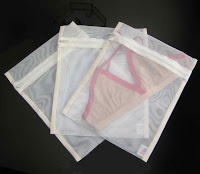There seems to be some confusion about the difference between clothing that is “organic” versus clothing that is “eco-friendly”. So I’d like to provide a little clarification of these terms.

First off the term “organic” is a short-cut term for an agricultural crop that has been organically grown, that is grown without harmful chemical fertilizers, pesticides and herbicides. For a crop to be labelled as organically grown, it must be certified by a government agriculture agency either here or abroad. In the USA the US Department of Agriculture’s (USDA) Organic Certification Program is the primary certifying agency for organic crops. Up until recently, companies could be certified by local government authorities such as the Organic Tilth Standards or the Texas Department of Agriculture. Now those programs are incorporated into the overall USDA Organic certification by acting as agencies accredited by the USDA to certify organic crops. In addition to the USA, this program accredits 42 foreign agencies (as of 12/2010) to certify crops as organically grown in other countries.
In general we can say that most organic fabrics are eco-friendly. However a fabric could possibly be organic and still be dyed using conventional chemical dyes, finished with toxic chemicals or sewn using child or sweatshop labor. Additional certifications such as the Global Organic Textile Standards (GOTS), Oeko-Tex® for Confidence in Textiles or Fair Trade Federation standards govern those extra details.

Eco-Friendly clothing can be environmentally beneficial while not being organically grown. For example, FaeriesDance.com’s Lingerie Wash Bag is made from recycled PET from plastic bottles that might otherwise wind up in landfills. Plastic is a petroleum product and in its initial form would definitely not be considered eco-friendly. Since it’s not an agricultural product, the term organic doesn’t even apply. But reusing waste products is better for the planet than tossing them out. No new chemicals are introduced during the recycling and restyling process, so the bags are definitely eco-friendly.
Soy fibre clothing is another good example. The clothing is made from the discarded outer casing of the soy bean, which otherwise goes into landfills. (The casings can be composted, but they seldom are at the manufacturing level.) While the original soy beans can be certified organically grown as an agricultural product, both organic and non-organic soy bean casings are used in creating soy fibre clothing. This is because the emphasis is on the environmental benefits of reclaiming the waste product rather than on ensuring organic production.
In summary, growing crops organically is better for the environment and our health, but a final piece of clothing made from organic fabric may or may not be completely eco-friendly depending on how it was dyed and finished. Reclaimed, reused and recycled fabrics make great eco-friendly options even if the base material wasn’t originally organically grown. So the terms “organic” and “eco-friendly” while often used together, are not actually synonymous.
Happy New Year,
